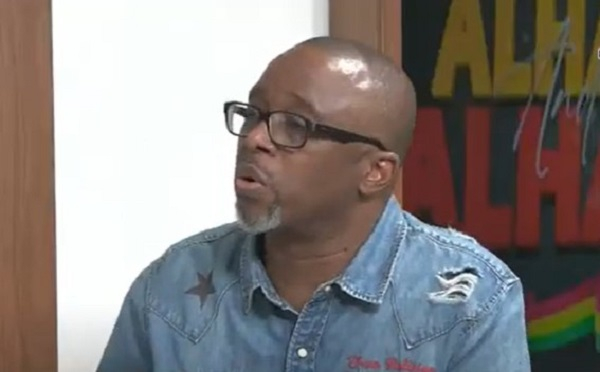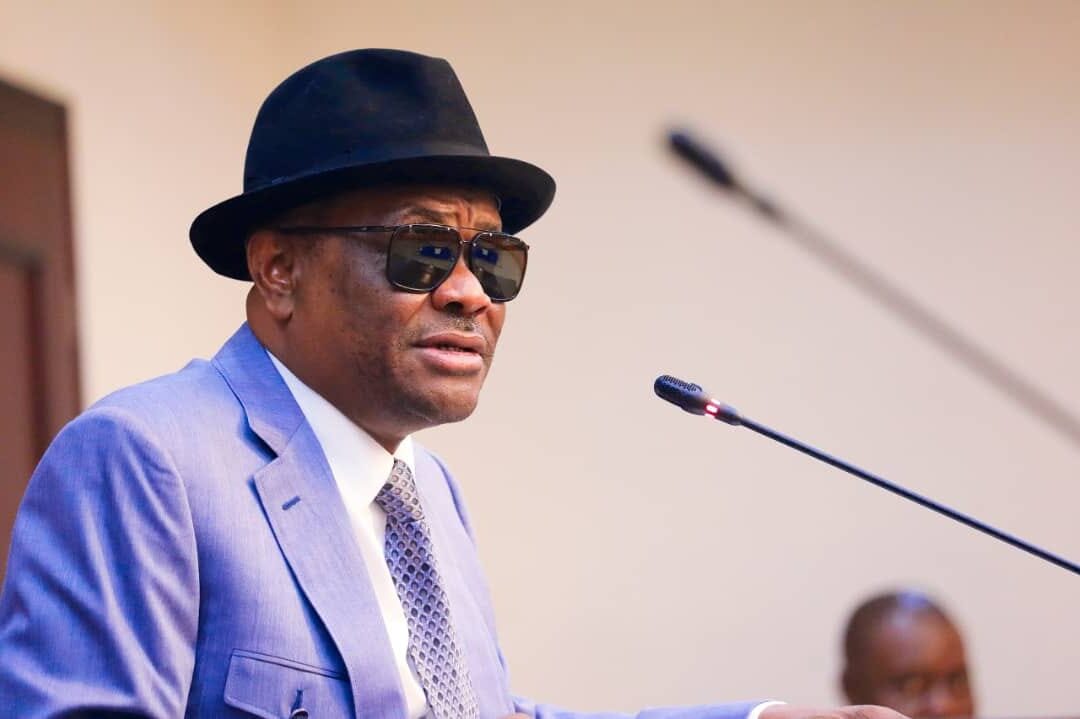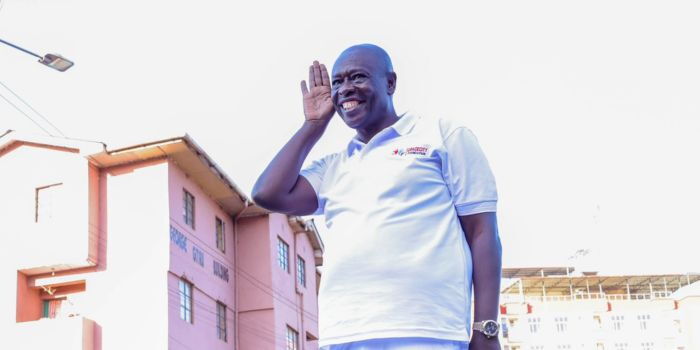How Electricity Act 2023 is rewiring the troubled power sector
Energy

Revenue generation remains the cornerstone of sustainability and growth in any industry, and the Nigerian Electricity Supply Industry (NESI) is no exception. A significant stride in this direction has been achieved—thanks to the strategic leadership of the Minister of Power, Chief Adebayo Adelabu.
Last year, in collaboration with him, the Nigerian Electricity Regulatory Commission (NERC) introduced a tariff increase for Band A customers—who represent 15 per cent of NESI’s consumer base. Although the policy initially sparked public outcry, it has proven impactful. At the Ministerial Press Briefing Series in Abuja last month, Adelabu announced that the reform yielded a remarkable N700 billion boost in market revenue—a 70 per cent jump from N1 trillion in 2023 to N1.7 trillion in 2024. He further disclosed that the increased earnings significantly reduced the government’s subsidy burden, trimming it from N3 trillion to N1.9 trillion within the review period.
His words: “Furthermore, it is evident that, due to our transformative tariff reforms, the market has generated an additional N700 billion in revenue, reflecting a 70% increase. This results from the cost-reflective tariff adjustment for Band A customers. Market revenue for 2024 rose from NGN 1 trillion in 2023 to NGN 1.7 trillion. This growth in market revenue is unprecedented, as the highest growth previously achieved was 20%. This has positively impacted the reduction of the government-subsidised tariff shortfall by 35%, decreasing it from NGN 3 trillion to NGN 1.9 trillion. According to the minister, it was a demonstration that financial viability and service delivery can coexist harmoniously.”
A few weeks later, the Minister hinted at the complete removal of electricity subsidies to pave the way for a fully cost-reflective tariff regime. He urged Nigerians to brace for the shift, stressing that subsidies were no longer fiscally sustainable. Should the government succeed in eliminating the subsidies, the projected N2.5 trillion budgeted for subsidy payments in 2025 could be redirected to critical infrastructure development. In terms of improving market liquidity, the Nigerian Electricity Liability Management Company (NELMCO) made commendable progress in debt recovery. Its efforts led to the reconciliation and reduction of debts owed by Federal Ministries, Departments, and Agencies (MDAs) to the Abuja Electricity Distribution Company (Abuja DisCo), cutting the figure by 47.4 percent—from N15.53 billion to N8.17 billion.
Another major milestone in the sector was the operationalisation of the Electricity Act (EA) 2023, which decentralised the electricity market. The Act empowered the Nigerian Electricity Regulatory Commission (NERC) to cede regulatory authority to states, allowing them to establish their own electricity regulatory bodies. This reform has spurred states and independent power producers into action. By the end of Q1 2025, NERC had successfully transferred regulatory oversight to 11 states: Enugu, Ekiti, Ondo, Imo, Oyo, Edo, Kogi, Lagos, Ogun, Niger, and Plateau. Of these, seven states—Enugu, Ekiti, Ondo, Imo, Oyo, Edo, and Kogi—have completed the transition, while four others are still in the process.
For years, stakeholders in the power sector vigorously advocated for the unbundling of the Transmission Company of Nigeria (TCN). However, due to a perceived lack of political will or clarity on implementation, no concrete steps were taken—until the enactment of the Electricity Act (EA) 2023 empowered the current administration to act. In line with the Act, the Federal Government established the Nigerian Independent System Operator (NISO), which has now commenced operations.
According to the Minister of Power, Chief Adebayo Adelabu, the creation of NISO represents a significant milestone in Nigeria’s power sector reform. As mandated by the Electricity Act 2023, TCN is to be split into two distinct entities: the Transmission Service Provider (TSP) and the National Independent System Operator (NISO). This separation is designed to ensure operational clarity and independence between system operations and market functions. While previous administrations attempted this reform without success, the Tinubu administration achieved a breakthrough with the formal inauguration of NISO’s board by Vice President Kashim Shettima on April 8. NISO is now responsible for independently managing grid operations to improve efficiency and reliability.
At the distribution end of the electricity value chain, power distribution companies (DisCos) are the closest to consumers. One of their most persistent challenges, however, has been inadequate metering and poor revenue collection. To tackle this, the Federal Government has launched the Presidential Metering Initiative (PMI), aimed at closing the country’s metering gap and ensuring transparent billing and enhanced revenue recovery. The PMI is backed by a N700 billion allocation from the Federation Accounts Allocation Committee (FAAC) and will be implemented through a newly established Special Purpose Vehicle (SPV), with a fully constituted board. The initiative aims to deploy 1.1 million meters by the end of 2025, followed by 2 million meters annually over the next five years. Procurement processes for the meters are already underway.
In addition to domestic initiatives, the metering drive has received a significant boost through the World Bank-funded Distribution Sector Recovery Program (DISREP). Under the program, over 3.2 million meters will be procured and installed nationwide, alongside the deployment of meter data management solutions to enhance DisCos’ operational performance. The first batch of 75,000 meters under the International Competitive Bidding 1 (ICB1) arrived in April, with an additional 200,000 meters expected by May 2025.
Just last week, Minister Adebayo Adelabu disclosed that the ongoing nationwide metering efforts were already yielding tangible results. He noted that the mass metering initiative across military barracks had generated N769.1 million in revenue between August 2024 and April 2025. The project, beyond revenue generation, aims to improve electricity supply and foster better energy consumption management within military installations. Meanwhile, distribution companies are undergoing a major restructuring process to enhance service delivery and operational efficiency. According to the minister, changes in ownership and management are underway, while the Nigerian Electricity Regulatory Commission (NERC) is strengthening the performance matrix to ensure improved accountability among the DisCos.
The generation sub-sector of the Nigerian Electricity Supply Industry (NESI) has also recorded remarkable growth within the review period. On March 2, 2025, Nigeria reached a record-breaking available generation capacity of 6,003 megawatts (MW)—a historic first. Just two days later, on March 4, 2025, the country achieved a peak generation evacuation of 5,801.44 MW, with an accompanying daily energy delivery of 128,370.75 megawatt-hours (MWh). These milestones reflect a steady upward trend, as the average daily power generation and distribution in Q1 2025 stood at 5,700 MW, compared to 4,100 MW in Q3 2023—an increase of 1,600 MW, or nearly 40%, since Adelabu assumed office.
Further gains have come from the revitalization of previously dormant assets. The new management of the Niger Delta Power Holding Company (NDPHC), in collaboration with the ministry, has successfully restored 232.5 MW of idle capacity from the Omotosho and Benin power plants. Further demonstrating its nationwide impact, the Niger Delta Power Holding Company (NDPHC) has implemented major infrastructure upgrades across the electricity transmission network.
According to Adelabu, 14 transmission lines have been constructed, upgraded, or newly installed across various states. Notable among these are the rehabilitation of the existing 2 x 132kV transmission line bay extension at the TCN substation in Papalanto, Ogun State, and the ongoing 65km 330kV double-circuit transmission line between Afam and Ikot Ekpene (Lot 4A). Beyond the grid, off-grid and interconnected mini-grid projects have brought clean, reliable electricity to thousands of households across Plateau, Cross River, Niger, Oyo, and Osun States. These include: a 550KWp solar mini-grid in Bakin Ciyawa and Kwande communities, Plateau State; a 440KWp mini-grid in Cross River State; a 990KWp system powering 3,900 households in Niger State; a 510KWp solar hybrid mini-grid in rural communities in Osun State.
In terms of foreign investment and partnerships, Adelabu revealed that Sun Africa Energy and Skipper Electric have expressed strong interest in Nigeria’s power sector, particularly in renewable energy generation and grid expansion. Their proposals, currently under review, aim to integrate solar power into the national grid, diversifying energy sources away from traditional hydro and thermal generation and strengthening energy security. Efforts are also underway to maximise output from Nigeria’s major hydro assets. Of the 700MW capacity at Zungeru Hydropower Plant, 550MW is currently being evacuated, while the Kashimbila Plant is fully evacuating its 40MW capacity. Looking ahead, development has commenced on the Makurdi Hydropower Project, which has the potential to generate up to 1,500MW, and the revitalization of the Kaduna Thermal Plant, a 215MW facility that had been inactive for six years but is now 87% complete and expected to be operational by the end of the year.
Meanwhile, feasibility studies for the concession of the abandoned 10MW Katsina Wind Farm are underway in partnership with the Katsina State Government and private investors. Additionally, the ministry is exploring wind energy potential along Nigeria’s coastal belt in tandem with the Lagos-Calabar Coastal Highway project, as part of efforts to diversify the country’s energy mix through sustainable sources.
In terms of power generation, Nigeria holds an impressive 14GW hydropower potential, yet currently utilises only about 20% of that capacity. To bridge this gap, the Federal Government is developing a comprehensive hydropower plan focusing on small dams under the Sustainable Power and Irrigation in Nigeria (SPIN) program. Spearheaded by the Minister of Power, Chief Adebayo Adelabu, feasibility studies are currently underway—particularly along strategic development corridors such as the Badagry to Sokoto Highway—to harness small hydro resources more effectively.
However, despite these promising initiatives, the electricity sector remains burdened by a substantial financial crisis. A debt overhang of over N4 trillion continues to stifle progress, severely limiting the operational capacity of Generation Companies (GenCos). Many GenCos have expressed their frustration, warning of possible shutdowns if the liabilities are not addressed. In response, Adelabu has committed to settling 50% of the outstanding debt by the end of 2025—a significant step toward restoring investor confidence and operational stability in the sector.
Another critical challenge lies in the reluctance of Distribution Companies (DisCos) to invest in infrastructure upgrades. This hesitancy is largely attributed to the absence of a fully cost-reflective tariff regime, which undermines returns on investment. Simultaneously, a significant portion of the public continues to view electricity as a government-provided social service—a mindset rooted in the legacy of the defunct National Electric Power Authority (NEPA). The issue is further compounded by the widespread lack of metering. Many customers, burdened by estimated billing practices they believe grossly inflate their actual usage, have resorted to energy theft and other forms of self-help. The DisCos’ inability or unwillingness to fully meter their customers remains a major impediment to accurate billing and sustainable revenue generation.
While commendable strides have been made in policy reform and infrastructure development, consumers remain largely unimpressed. The public continues to demand tangible improvements in actual power supply rather than abstract milestones like peak generation or theoretical capacity. For most Nigerians, the true measure of success in the electricity sector lies in consistent, reliable access to electricity—not in projections or promises.










